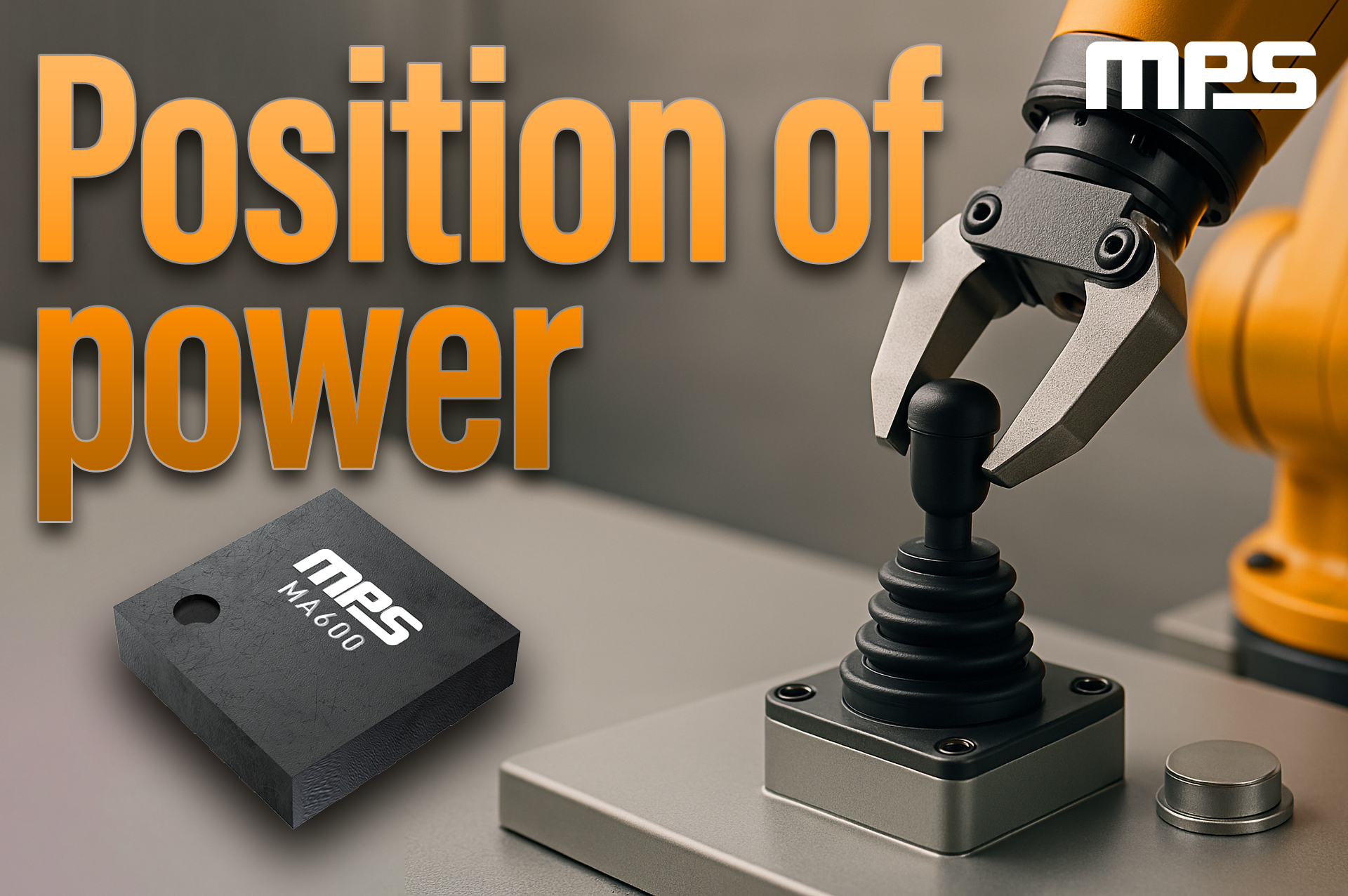Products
Solutions
Published
9 May 2025
Written by Emily Curryer
Power management might be what MPS (Monolithic Power Systems) is known for, but at Embedded World 2025, the company showed it’s got more than volts up its sleeve. With a live demo featuring magnetic position sensors for motor control, MPS demonstrated how it’s stepping further into the industrial automation ecosystem—and it’s got all the parts to prove it.
From Power to Precision: MPS’s Expanding Ecosystem
When you think of MPS, your mind likely jumps straight to sleek power management ICs—and fair enough. But as Christian from MPS explained, there’s a growing demand from design engineers for more integration, more convenience, and more complete solutions. That’s where MPS’s sensor technology comes in.
Their position sensors, built on Hall-effect and TMR (Tunnel MagnetoResistance) technologies, add serious flexibility to industrial and automotive applications. From spoiler control in vehicles to typical industrial actuators, these sensors are designed to slot into your motor control system with minimal fuss and maximum performance.
What’s in the Demo? Motor Drives Meet Magnetic Sensors
MPS’s demo was refreshingly real-world. At the heart of the display was a motor system driven by MPS’s own three-phase BLDC motor driver IC, courtesy of its sister company, Easy Motion. On the mechanical side, a moving spoiler mimicked a standard actuator—ideal for automotive or industrial applications.
Mounted on the rotating shaft was the MA900, a stray-field immune position sensor. It reads angular movement directly from a magnet—no filtering, no complicated math. You get a true one-to-one angle output, straight from the sensor to your microcontroller.
And it doesn’t stop there. Tucked inside the joystick used to control the demo was a second MPS sensor—a 3D magnetic sensor measuring field strength across all axes. This gave users real-time insight into changes in field strength as the joystick moved, providing a second layer of feedback and precision.
Why Magnetic Position Sensors for Motor Control Matter
Here’s the magic sauce: these sensors aren’t just accurate—they’re easy. No algorithms needed. No extra compute cycles. Just precise angular feedback straight from the sensor, with support for end-of-shaft, side-shaft, and even on-axis configurations.
This means faster development, simpler designs, and better reliability, especially in applications where stray field immunity and 3D field sensing are key.
More Than Just Power
So, what’s the big takeaway for design engineers? MPS is more than just a power IC company. With integrated sensors, drivers, and complete motion ecosystems, they’re positioning themselves as a go-to provider for industrial and automotive control systems.
If you’re designing a motor control system with integrated position sensing, MPS just made your short list of suppliers a whole lot shorter.
Final Thought:
With real-time angular output, integrated 3D field sensing, and built-in power drivers, magnetic position sensors for motor control have never looked so easy to implement. And thanks to MPS, they now come from the same people who already manage your power.
Comments are closed.

Comments
No comments yet